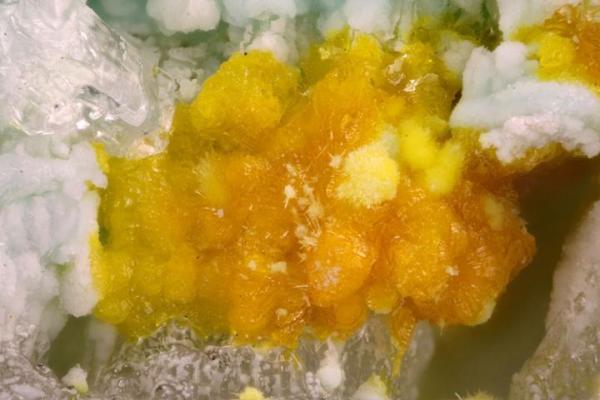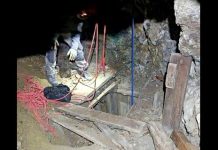Feb. 8 (UPI) — Scientists discovered three new uranium minerals, or uranyl minerals, growing on the walls of an abandoned uranium mine in Utah. The minerals were found and analyzed by researchers at Michigan Technological University.
The three new minerals, leesite, leószilárdite and redcanyonite, are uranium oxide compounds, born of reactions between uranium and oxygen — uranium versions of rust. Researchers described the new minerals in Mineralogical Magazine.
Leesite belongs to the schoepite mineral family, but miners called leesite growths “gummites.” The mineral appears as tiny, bright yellow blades or needles, typically stacked atop companion minerals like gypsum. Its stacked structure consists of atoms of uranium and oxide, layered with potassium.
Leószilárdite forms pale yellow blades. It’s a carbonate, but unlike most carbonates, it is soluble in water.
“If you look at leószilárdite in a picture, you can kind of pick out that they have an unusual shape,” Travis Olds, now a graduate student at Notre Dame, said in a news release. “But put them under the SEM, scanning electron microscope, and it’s obvious.”
Redcanyonite is a sulfate and is not soluble in water. It incorporates manganese and ammonium atoms into its structure and presents in a range of colors from orange to red-orange.
“The only way to better understand the chemistry of uranium is to go out and find new minerals — and describe their topology, their structures,” Olds said. “They teach us a lot about how uranium can then be moved in the environment.”








